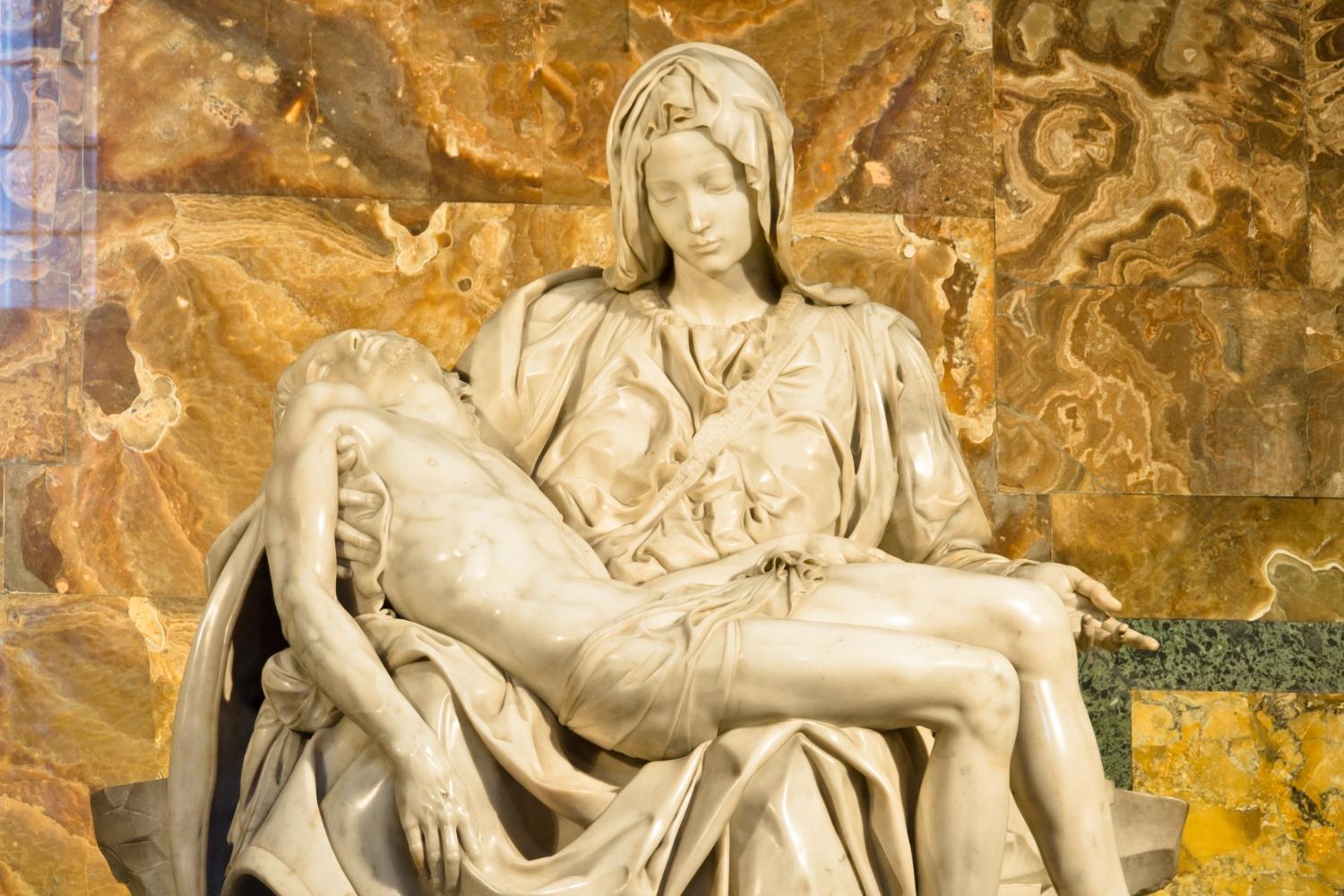
The Florentine artist Michelangelo (1475 to 1564) is considered to be one of the greatest artists of all time, having produced world-famous sculptures and paintings in addition to serving for a time as the architect of St. Peter’s Basilica. He was known for infusing his works with terribilità, referring to their ability to awaken a sense of awe in viewers. One of his most impressive and moving sculptures – the Pietà – was completed when he was only 24 years old. (Click here to see the entire sculpture.)
Commissioned by French Cardinal Jean Bilhères de Lagraulas to produce a sculpture of Mary holding the body of her son – an image commonly depicted in art at that time – Michelangelo worked from a single block of Carrara marble. Michelangelo famously stated that he could see the sculpture within the marble, and that he simply had to remove everything that was unnecessary. Completed in 1499, the work was first moved into St. Peter’s Basilica in 1517, and was placed in its current position near the entrance to the basilica in 1749.
While the Pietà is one of Michelangelo’s most famous works, it is also unique in that it is the only work he ever signed. Not long after the work was complete, Michelangelo overhead viewers ascribing his work to another sculptor. In response, Michelangelo carved his name into Mary’s sash; however, in regret, he decided never to sign another of his works.
Michelangelo made three artistic decisions in order to convey a particular meaning that are worth exploring. First, a close examination reveals that Mary is depicted as being much larger than Christ – a necessary adjustment for showing a woman cradling the body of her son in her lap that Michelangelo nevertheless executes with grace. Second, one will notice that Mary is depicted as being younger than she would have been at the time of Christ’s death. Michelangelo reasoned that because Mary was conceived without sin, normal corruption would not have applied to her. (This was centuries before the dogma of the Immaculate Conception was defined.) Third, one will see that Christ’s body lacks many of the marks of his brutal suffering and death: the nail holes and wound in his side are relatively small, and his face is unblemished. In this way Michelangelo highlights the willing sacrifice of Christ.
Today, Michelangelo's Pietà sits behind protective glass over a small altar. As one sees a priest elevating the Body of Christ at the altar, it is not difficult to imagine the marble depiction of Christ's body cradled by his mother slipping from her lap onto the altar as a willing sacrifice.

The First Draught
To receive the Weekly Update in your inbox every week, along with our weekly Lectio Brevis providing insights into upcoming Mass readings, subscribe to The First Draught.